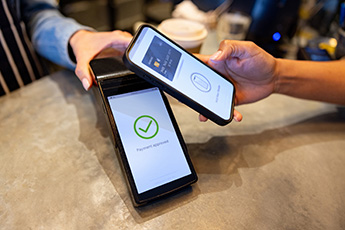INRIX transportation research looked at how much time motorists spend searching for places to park and which US cities were the worst. It found people spend an average of 17 hours/year searching. The worst cities are: New York (107 hours/year), Los Angeles (85), San Francisco (83), DC (65), Seattle (58). Now you know.
As you ponder your drive into work this morning, consider something closer to banking perhaps. To win, community banks must continue to set themselves apart from competitors. Community banks need to show they are tuned in to customers' needs and dedicated to providing the latest offerings. Not surprisingly, digital banking services play a major role in the way customers perceive banks (at least according to CSI's 2018 Poll).
It found that while 86% of bank customers say they are happy with the digital offerings of their bank, community banks cannot afford to rest easy.
According to the survey, 86% of people expect their banks to provide them with seamless service. This means employees in a branch or customer service representatives contacted by phone must have the ability to pick things up from the exact point that a customer leaves off in their digital interaction with the bank. That number climbs to 90% among college graduates and households with earnings above $100,000 annually.
Of course, the importance of providing customers with a seamless experience is not lost on bank executives. About 48% say an omnichannel approach is among their top priorities when it comes to reaching out to new customers.
Hopefully, community banks are also actively investing in cross-training employees, so they can address customer concerns proactively and quickly. Here, the majority of customers say banks should be able to answer any questions and meet their financial needs during their first point of contact.
Another way that community banks can differentiate is by demonstrating concern for customer security. This is especially critical given people's increasing reliance on mobile and online banking. At a time when news of companies being hacked and identity theft has become a routine occurrence, you have an advantage in knowing many of your customers personally. Keep leveraging that connection.
Another survey finding is that 81% of customers are confident in their bank's abilities to protect their personal information from hackers. That is good, but bankers know that there is a good chance they will eventually be the victim of cybercriminals.
Given this reality, 60% of bankers say they plan to increase their cybersecurity budget. In addition to that, continue to educate customers about the latest tactics being used by cybercriminals.
Nearly 50% of all bank customers believe mobile payments are safer than credit card payments. That number climbs to 57% among individuals between the ages of 18 and 44Ys old. Your bank could grow its customer base by targeting this group with education and touting the security of your mobile offerings.
The search to please customers is ongoing. But, whatever you choose to do to keep them loyal, it should ultimately fit your bank and your community.




